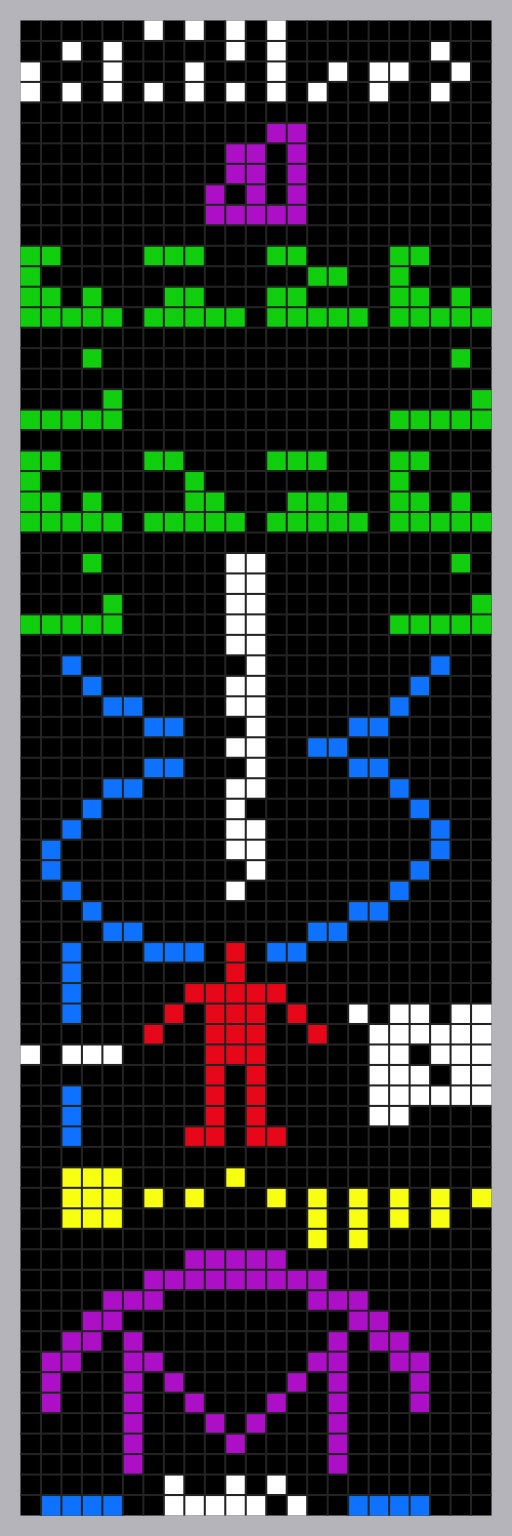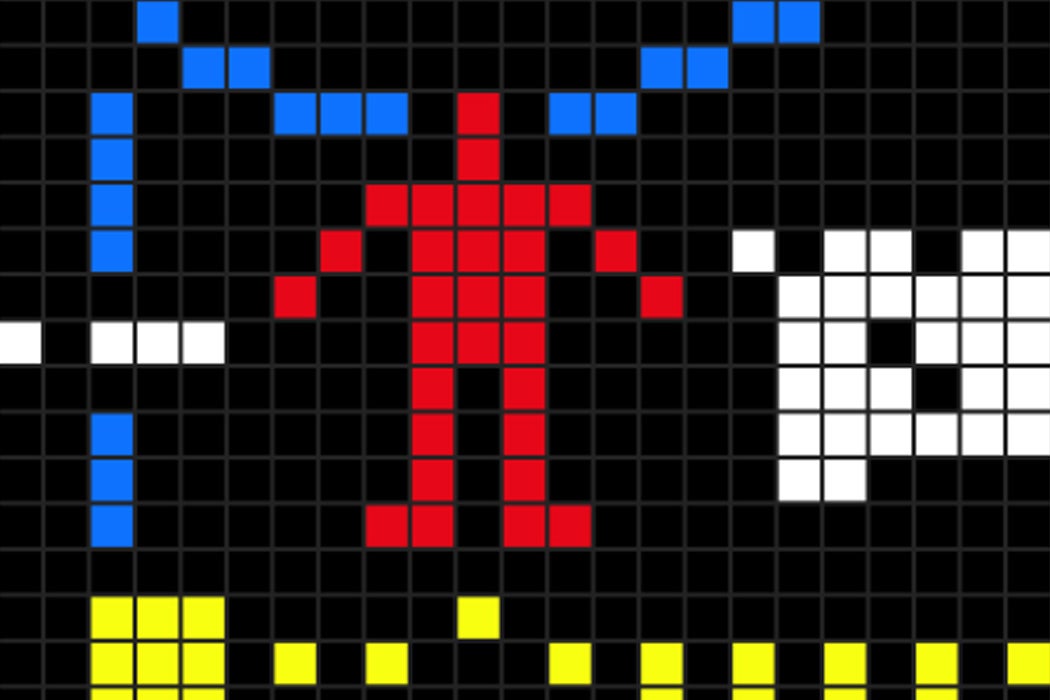On November 16, 1974, a group of scientists sent a message to the stars, with the hope that someone out there might be listening. They used the 1,000-foot Arecibo Telescope in Puerto Rico, constructed a decade earlier. Today, the Arecibo Message is still on its way to the star cluster Messier 13, and will take tens of thousands of years to get there. So why did the scientists send it?
In a 1975 issue of Scientific American, astronomers Frank Drake and Carl Sagan explain that the Arecibo Message was symbolic—proof that a radio message could be sent across the galaxy. It was the beginning of a serious discussion about the possibility of extraterrestrial intelligence.
They transmitted the image in binary numbers, as a series of ones and zeros representing white squares and black squares. When put together, they form a blocky image. Numbers and scientific formulas begin the message, followed by pictures of a DNA double helix, a human figure, our solar system, and the Arecibo Telescope itself.
For Drake and Sagan, the Arecibo Message had implications for age-old questions about our place in the universe. “Today for the first time in history,” they write, “[these questions] have entered into the realm of experimental science.”
They describe developments in astronomy and biochemistry that indicated a serious possibility of life beyond Earth. Emerging work on exoplanets showed that planets might be common in the galaxy. Scientists were investigating the origins of life and starting to search for evidence of life on Mars. Drake and Sagan argue that the next logical step is to look for life outside our solar system.

To the astronomers, the project seemed fairly practical and straightforward. They describe how radio is the “fastest and also by far the cheapest method” to send or receive messages across such long distances. An understanding of radio astronomy even puts constraints on the best frequencies to use for such a message.
Drake and Sagan write that “it seems to us quite possible that one-way radio messages are being beamed at the earth at this moment by radio transmitters on planets in orbit around other stars.” They argue that we should be listening. They describe the Cyclops project, which involved building “an array of 1,500 radio antennas each 100 meters in diameter.”
Their arguments had long-term impact. Today, the search for extraterrestrial intelligence (SETI) is an active project, with the SETI Institute at the forefront. While Cyclops never materialized, exoplanet astronomers keep discovering more planets beyond our solar system, and scientists use radio telescopes to search for artificial radio signals.
Weekly Newsletter
Drake and Sagan explain that the Arecibo Message isn’t the only message we’ve sent: our radio and television broadcasts have sent out a bubble of electromagnetic signals into space.
“Its spherical wavefront,” they write, “expanding like a ripple from a disturbance in a pool of water and inadvertently carrying the news that human beings have achieved the capacity for interstellar discourse, envelops about 20 new stars each year.”







